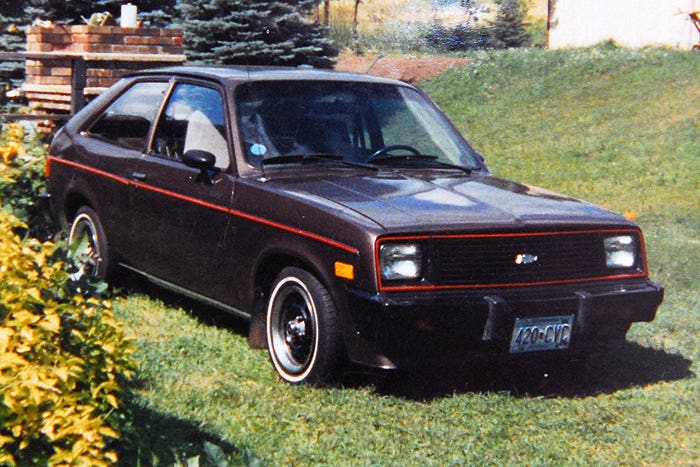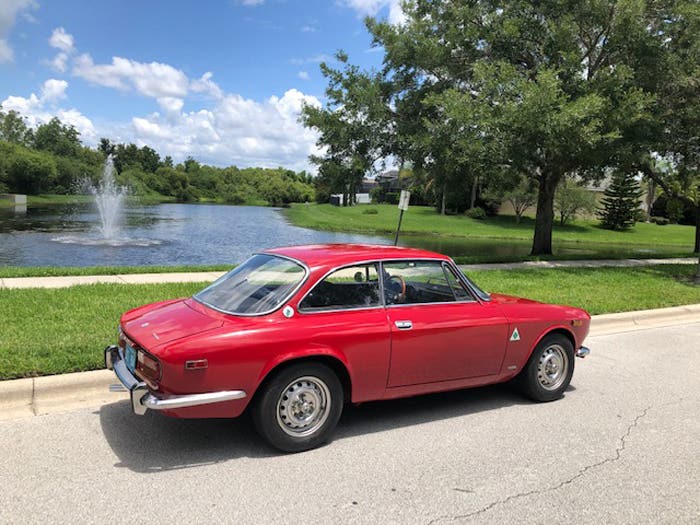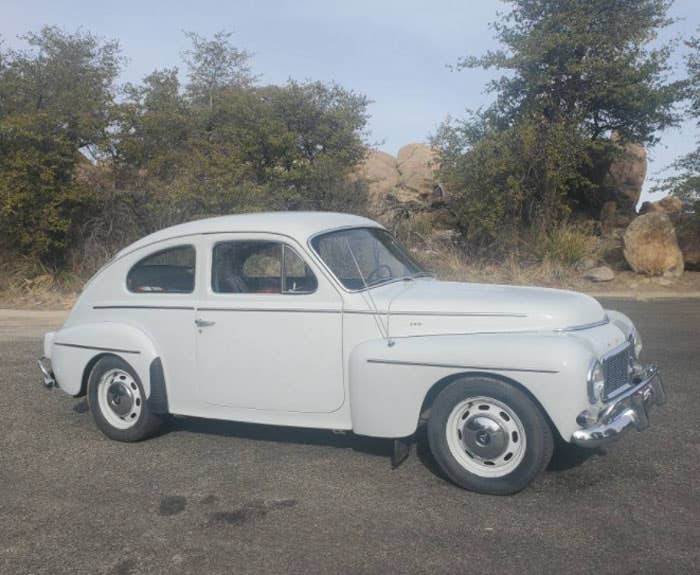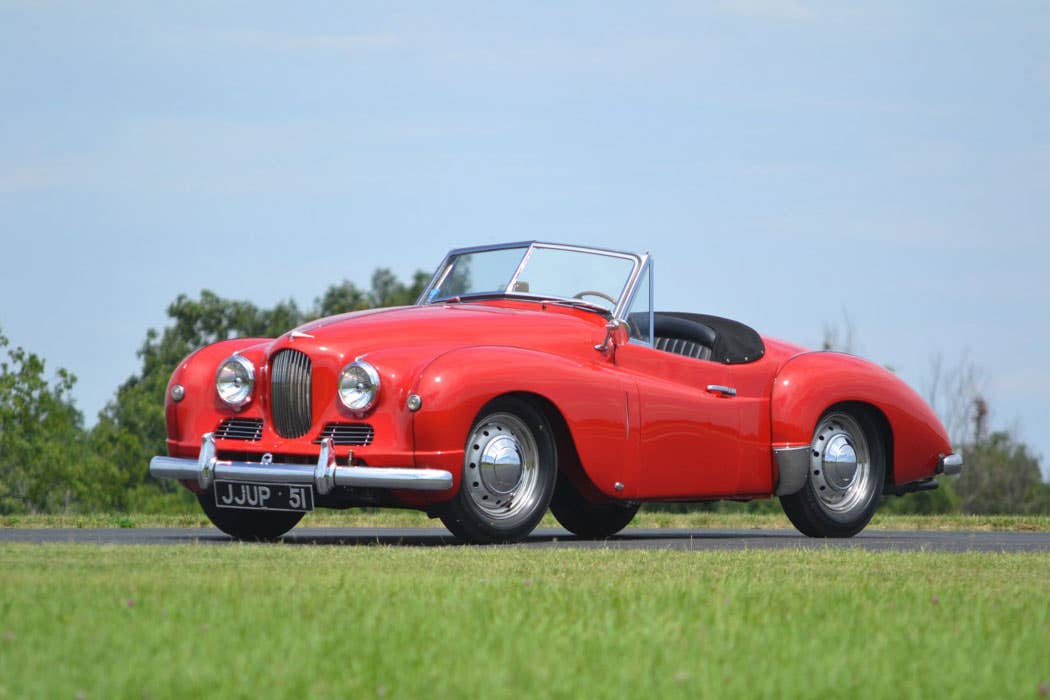XP-850: Cadillac’s Experimental Eldorado of 1965
A rare look at the original GM styling report.
Close inspection shows this isn’t an ordinary 1965 Cadillac
Fleetwood Eldorado convertible. Note the flush-fitting convertible
top lid in the down position, wire wheels and 1966-style cornering
lamps, all features not found on production 1965 Eldorados.
The restrained elegance of the slab-sided Lincolns was a styling sensation and carried Lincoln through significant image and sales gains throughout the 1960s.
As a result of Lincoln’s styling challenge, Cadillac released a clean, slab-sided car of its own in 1965 that elegantly retained traditional Cadillac features. Yet, through the redesigned 1965 and similar-appearing 1966 models, Cadillac convertible coupes retained a bulky folded convertible top when the top was in the lowered position. The 1961-and-later Lincoln Continental convertible sedans, however, featured a folded convertible top hidden under a cover flush with the sheet metal around it. In 1965, General Motors worked to match Lincoln’s appealing flush top-cover styling element on a special Eldorado.
The project to give this Eldorado a fully automatic top and
flush-fitting top compartment lid earned the special project
car the name “XP-850.”
A 1966 General Motors Project Report of the “XP-850 Cadillac Convertible Running Car” details work by the General Motors Styling Staff and Fisher to build “a completely automatic convertible top on a 1965 Cadillac Eldorado Convertible.”
The report, submitted by J.H. Gilson and approved by A.A. Limberg in January 1966, addresses the special design features of the unique project Eldorado.
“The design features of the Cadillac Eldorado Convertible, XP-850 are the Fisher ‘Infora’ convertible top and the Styling features which were added to make it fully automatic,” the GM report said. “These were a powered retractable glass window, powered flush top compartment lids and a powered convertible top header latch. The Fisher ‘Infora’ convertible top bows and tacking strip were altered to accept the flush lid design. The deck lid was retained, but the hinging was replaced with hood hinges.”
Details of the Infora top are not included in the report, but the photos accompanying the report made it appear to be a more finished-appearing top on the inside, and without the intrusion of exposed convertible top bows. XP-850 was one of 10 1965 Cadillac Eldorado convertibles fitted with the Fisher Infora convertible top early in 1965, and it was the only car scheduled for evaluation by the General Motors Styling Staff. As a result, it was likely the only such 1965 Eldorado given the special styling alterations by General Motors Styling Staff.
According to the report, “Styling, at this time, decided to install flush convertible top compartment lids and add electric header latches as well as a powered rear glass window to provide a completely automatic top; a top that any woman could operate with ease.
“The advanced design should be cheaper, more positive in operation and feasible for production.”
Engineering these styling alterations by the General Motors Styling Staff commenced Feb. 1, 1965, but the design staff’s heavy workload caused many holdups. On Oct. 11, 1965, the conversion work on the Eldorado was completed by the fabrication department and the top was demonstrated to management and car division representatives. Nine days later, on Oct. 20, 1965, the accompanying photos were taken. “All agreed that the design has production possibilities,” indicated the Project Report.
The Eldorado was then delivered to the GM garage for use by an unnamed corporation executive. While being demonstrated, the circuit breaker for the top circuit protection kept opening, shutting off power to the top.
“It was suggested [by the executive] that before it was delivered to him again, the top be cycled 2,000 times to make sure of its dependability,” the report said. “This, he felt, would be necessary before demonstrating it to other corporation executives.”
At this point, the car was returned to Styling and the recommended cycling test began. During the cycle tests, the top began moving slower with each test. The top finally stalled after 250 cycles, even with electric fans cooling the drive motor, “because of the circuit breaker opening,” stated the report.
The cause of the failure was determined to be a damaged spur gear and thrust bearings in the main drive gear boxes. Tenstedt Division had designed these Dura-built assemblies and inspected them and found the spur gear had not been hardened, causing the thrust bearing to fail, the report stated.
After the damaged parts were replaced, Fisher was called in to adjust XP-850’s top. When the top would not stack properly, it was determined that the main pivot-torail frame was bent by 1/4 inch. The rail’s thickness was increased 1/4 inch and its design was further corrected using a fixture to relocate it. The top was then reassembled and adjusted so that it stacked in the proper position.
By the time of these adjustments, automobile production was in the 1966 model season, so XP-850 was updated to the 1966 configuration. It is pictured here in Oct. 20, 1965, before the facelift was undertaken, and retains the standard 1965 Fleetwood Eldorado side trim, as well as the front grille and rear bumper found on all 1965 Cadillac models that year. However, there are a few unique elements on XP-850. Wire wheels not found on any other production Cadillac appear in these October photographs. During the 1950s, some design-study Cadillacs have appeared with wheels by Borrani, the company that may have sourced the three-bar spinner wire wheels on XP-850. These wheels do not appear to be the same wire wheels found on the 1964 Cadillac Florentine coupe show car.
XP-850 was also given cornering lamps similar, but not identical, to those found on 1966 Cadillac models. Using this style of cornering lamp would simply have required the use of a 1966-style front fender, which would have been available in October 1966, or significant modification to a 1965 Cadillac front fender that XP-850 was presumably fitted with originally. A single rectangular lense covered two stacked headlamps up front for a look often found early-1960s GM show cars, as well as the personal cars of Bill Mitchell. The crowning touch to the front end of the car was a deck job that removed the Cadillac “V” and crest, and the car received a special stand-up hood ornament showing the wreath and crest. Mitchell’s personal 1967 Fleetwood Eldorado also featured a stand-up hood ornament that replaced the standard wreath and crest on the front of the hood of production cars.
By Jan. 14, 1966, work to convert the XP-850 was complete. The car got a fresh repaint and was made available to management.
Where it went after that remains a mystery. They were submitted by J.H. Gilson and approved by A.A. Limberg in January 1966.
Below are pages from the original styling report.
MORE RESOURCES FOR CAR COLLECTORS FROM OLDCARSWEEKLY.COM








